Endangered Parosphromenus Rubrimontis PAIR
RM100.00
Out of stock
Parosphromenus Rubrimontis


The Parosphromenus rubrimontis, commonly known as the licorice gourami, is a captivating and unique species that appeals to aquarists with a penchant for rare and delicate fish. Native to the peat swamp forests of Southeast Asia, this small but striking fish requires specific care and attention to thrive in captivity. This article delves into the intricate details of caring for Parosphromenus rubrimontis, from understanding its natural habitat to creating an optimal environment in your home aquarium, ensuring a healthy and vibrant life for this extraordinary species.
Introduction
Parosphromenus rubrimontis is a species that stands out not only for its beauty but also for its rarity and the specialized care it requires. Known for its iridescent colors and delicate structure, this fish is a member of the gourami family and is often sought after by dedicated hobbyists who appreciate its unique characteri
stics. By understanding its natural environment and specific needs, you can successfully keep and enjoy this fascinating species in your own aquarium.
Appearance and Characteristics
The Parosphromenus rubrimontis is a small fish, typically reaching only about 1.5 inches (4 cm) in length. Its body is elongated and laterally compressed, with males displaying more vibrant colors compared to females. The most distinguishing feature of this species is its coloration: a mix of shimmering blues, greens, and reds that reflect light in a stunning display. The fins are often edged with contrasting colors, adding to the visual appeal. Females are generally less colorful but still exhibit subtle hues that make them attractive in their own right.
Natural Habitat
Understanding the natural habitat of Parosphromenus rubrimontis is crucial for replicating its conditions in captivity. This species is native to the blackwater streams and peat swamps of Borneo and Sumatra. These environments are characterized by soft, acidic water with a pH ranging from 4.0 to 6.0, low mineral content, and temperatures between 75-82°F (24-28°C). The water is often stained brown from tannins released by decaying plant matter, which also provides a dense cover of vegetation and leaf litter on the substrate.
Tank Setup
To recreate the natural habitat of Parosphromenus rubrimontis, consider the following guidelines for tank setup:
Tank Size
A small group of these fish can be comfortably housed in a tank as small as 10 gallons, though larger tanks are preferable to provide more stable water conditions and ample space for natural behaviors.
Substrate and Decorations
Use a soft, sandy substrate to mimic the natural riverbeds. Incorporate plenty of driftwood, leaf litter, and live plants to create hiding spots and mimic the dense vegetation of their native habitat. Plants like java moss, cryptocoryne, and anubias are excellent choices.
Water Conditions
Maintaining the correct water parameters is crucial. Use reverse osmosis (RO) water or rainwater to achieve the soft, acidic conditions these fish require. The pH should be kept between 4.0 and 6.0, with a hardness of less than 2 dGH. Regular water changes, using aged and conditioned water, are essential to maintain water quality and stability.
Lighting
Dim lighting is preferred, as this closely resembles the shaded environments of their natural habitat. Use floating plants to diffuse the light and provide additional cover.
Filtration
A gentle filtration system is necessary to avoid strong currents, which can stress these delicate fish. Sponge filters or filters with adjustable flow rates are ideal. Ensure the water remains well-oxygenated and free from ammonia and nitrites.
Feeding
Parosphromenus rubrimontis are micro-predators, feeding primarily on small invertebrates in the wild. In captivity, they should be offered a varied diet to ensure proper nutrition:
Live and Frozen Foods
Feed them live or frozen foods such as daphnia, brine shrimp, and mosquito larvae. These foods closely replicate their natural diet and stimulate their hunting instincts.
Prepared Foods
While they may accept high-quality micro pellets or flakes, these should only be a supplement to their diet. Live and frozen foods should remain the primary food sources.
Feeding Frequency
Feed small amounts multiple times a day, ensuring they consume the food within a few minutes. This helps prevent overfeeding and maintains water quality.
Breeding Tips
Breeding Parosphromenus rubrimontis can be a rewarding experience for dedicated aquarists. Understanding their breeding behavior and providing the right conditions are key to success:
Breeding Setup
Set up a separate breeding tank with similar water conditions to the main tank but slightly warmer (around 80°F). Provide plenty of hiding spots using caves, plants, and leaf litter.
Pair Selection
Choose a healthy male and female, ensuring the male displays vibrant colors and courtship behavior. Males will often build bubble nests under leaves or within caves.
Spawning Behavior
Once the male has built a nest, he will court the female with a series of displays. The female will lay eggs in the nest, which the male will then fertilize and guard.
Raising Fry
After spawning, remove the female to prevent aggression from the male. The male will care for the eggs and newly hatched fry. Once the fry are free-swimming, remove the male and start feeding the fry with infusoria or commercial fry food, gradually introducing baby brine shrimp as they grow.
Common Challenges
Keeping Parosphromenus rubrimontis can present several challenges, mainly due to their specific environmental needs and susceptibility to poor water conditions. Here are some common issues and how to address them:
Water Quality
Maintaining stable water conditions is critical. Regular testing and water changes are essential to prevent fluctuations in pH and hardness that can stress the fish.
Feeding Difficulties
Some fish may be picky eaters, refusing prepared foods. In such cases, persist with offering live and frozen foods to ensure they receive proper nutrition.
Compatibility
These fish are best kept in species-only tanks or with other peaceful, small fish that require similar water conditions. Avoid keeping them with larger or aggressive species that could stress or prey on them.
Conclusion
Caring for Parosphromenus rubrimontis is a rewarding endeavor that allows aquarists to appreciate the delicate beauty and fascinating behavior of this unique species. By replicating their natural habitat, maintaining pristine water conditions, and providing a varied diet, you can ensure a healthy and thriving environment for these captivating fish. Whether you’re drawn to their iridescent colors, intricate breeding behaviors, or simply their rarity, Parosphromenus rubrimontis makes a remarkable addition to any dedicated aquarist’s collection.
FAQs
How often should I feed my Parosphromenus rubrimontis?
Feed small amounts multiple times a day, ensuring they consume the food within a few minutes to maintain water quality and proper nutrition.
What tank size is best for Parosphromenus rubrimontis?
A minimum of 10 gallons is recommended for a small group, though larger tanks provide more stable water conditions and space for natural behaviors.
Can Parosphromenus rubrimontis be kept with other fish?
They are best kept in species-only tanks or with other peaceful, small fish that require similar water conditions.
What are common signs of illness in Parosphromenus rubrimontis?
Watch for symptoms like clamped fins, changes in color, lethargy, or changes in appetite. Early detection and treatment are crucial for recovery.
How do I maintain water quality in my Parosphromenus rubrimontis tank?
Perform regular water changes using aged and conditioned water, use a gentle filtration system, and monitor water parameters closely.
What should I do if my Parosphromenus rubrimontis appears stressed?
Check water conditions, ensure a stable temperature, provide plenty of hiding spots, and avoid sudden changes in the environment to reduce stress.
REFERENCES:
https://www.parosphromenus-project.org/en/rubrimontis?i=Parosphromenus-cf-rubrimontis-mimbon-2008-Rick7
https://www.mybis.gov.my/sp/24209
https://fishbase.mnhn.fr/FieldGuide/FieldGuideSummary.php?GenusName=Parosphromenus&SpeciesName=rubrimontis&pda=1&sps=
| Weight | 0.3 kg |
|---|---|
| Dimensions | 15 × 10 × 10 cm |
Only logged in customers who have purchased this product may leave a review.
Related products
Fish Food
🔥 TikTok Live Exclusive Promo – Limited Betta Fish Deals + Free Shipping in Peninsular Malaysia!
Hybrid & Wild Betta Fish
Live Fish and Invertebrate Sales
Betta Halfmoon Fish Varieties: Aquatic Elegance for Your Aquarium
Hybrid & Wild Betta Fish
Betta Macrostoma Pair: The Crown Jewel of Freshwater Aquariums
Hybrid & Wild Betta Fish
Water Conditioners
Indian-Almond (Terminalia catappa) Ketapang Leaf Extract: Nature’s Elixir for Healthy Fish
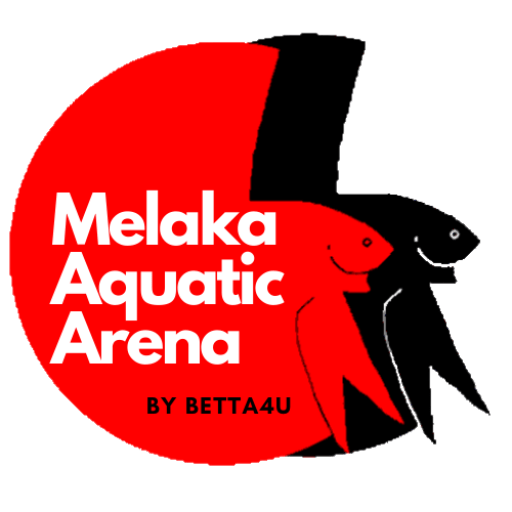
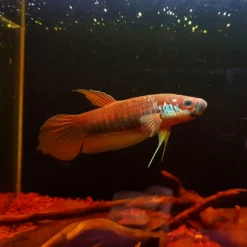 Betta Patoti Pair for Sale – Rare & Stunning Wild Betta
Betta Patoti Pair for Sale – Rare & Stunning Wild Betta 



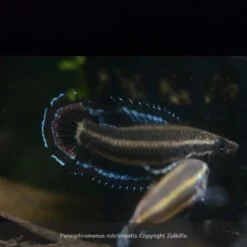







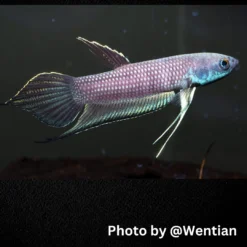
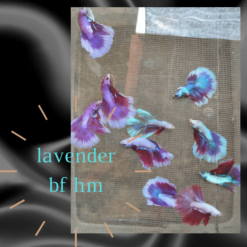

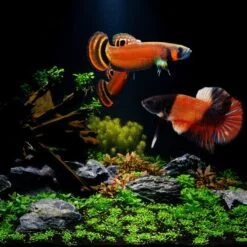


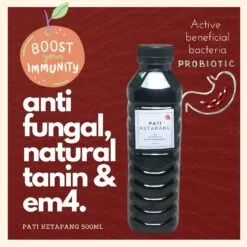

Reviews
There are no reviews yet.